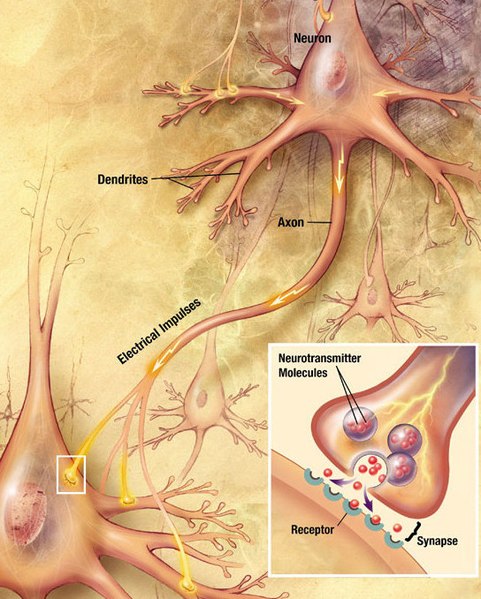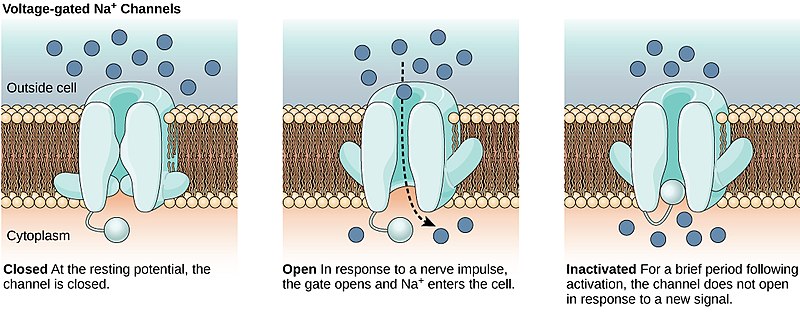One of the most important features of neurons (Purkinje cells, for example), is that they are capable of electrical communication. Think of the last time you saw a TV intro or movie montage with a depiction of the brain on a microscopic level – though it’s technically invisible to the naked eye, that ‘spark’ you can see traveling down a portion of the neuron is actually not too far from reality. One of the most common ways to describe an active neuron, in fact, is to say that it’s “firing.” Essentially, when a neuron is activated, it ‘fires off’ an electrical impulse that is transmitted down a long, slender extension known as the axon. The axon ends where the next neuron in the circuit begins, and when the impulse arrives at that point, it initiates a series of events that allows the signal to jump to the next cell.

This electrical signal is made possible by molecular machines known as ion channels. These proteins span the cell membrane, which is the barrier between the interior and exterior of the cell. When they receive a certain signal, the channel opens, allowing ions – atoms that carry an electrical charge, such as sodium, potassium, and calcium – to pass through. There are many types of proteins that allow the transport of small molecular components, but the source of a neuron’s electrical capabilities is that its channels specifically allow ions to pass into or out of the cell. Though a single ion’s charge is quite small, the large number of ions that are exchanged when a neuron’s channels open makes for a significant electrical effect – enough to produce an electrical signal that allows neurons to communicate with one another, giving us the ability to think, move, and interact with our environment.

Though the mutations that cause SCAs typically occur in genes that are expressed in every cell of the body, disease is usually restricted to the brain. One theory about why this is the case is that these SCA-related genes are necessary for the health and maintenance of ion channels in certain brain tissues – namely, the cerebellum and brainstem. At any rate, there is evidence that the electrical activity of these brain regions is abnormal in many SCAs, which strongly suggests that ion channels play a critical role in these disorders.
If you would like to learn more about ion channels, take a look at this Encyclopaedia Britannica article.
Snapshot written by Logan Morrison edited by Dr. David Bushart










